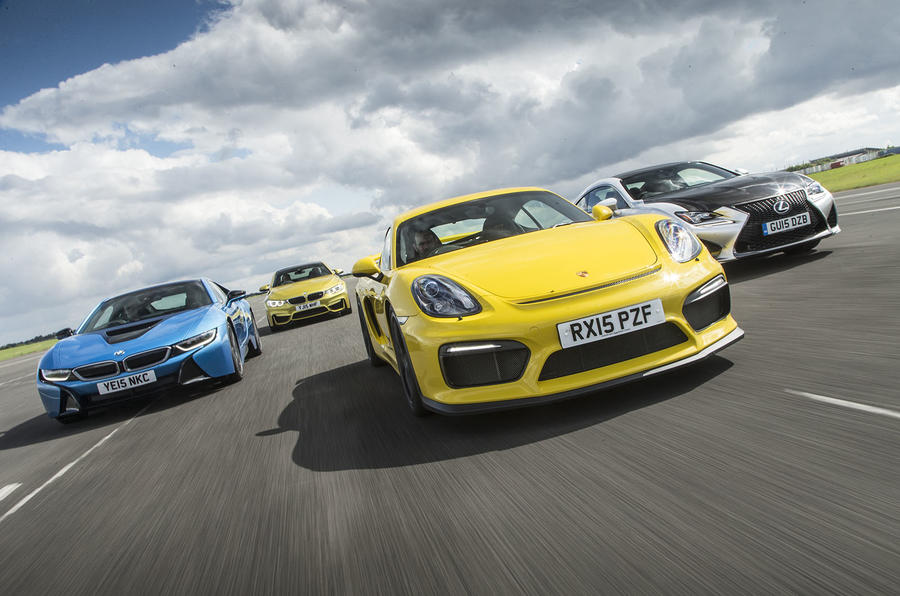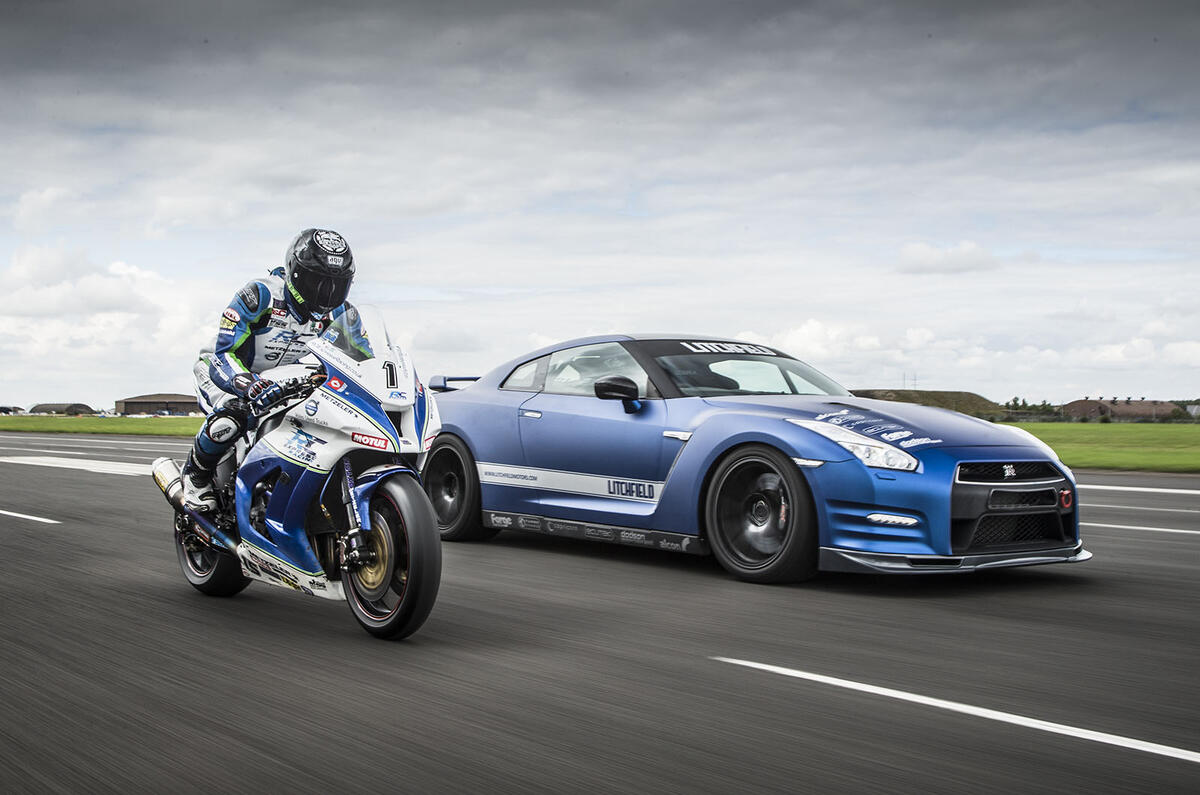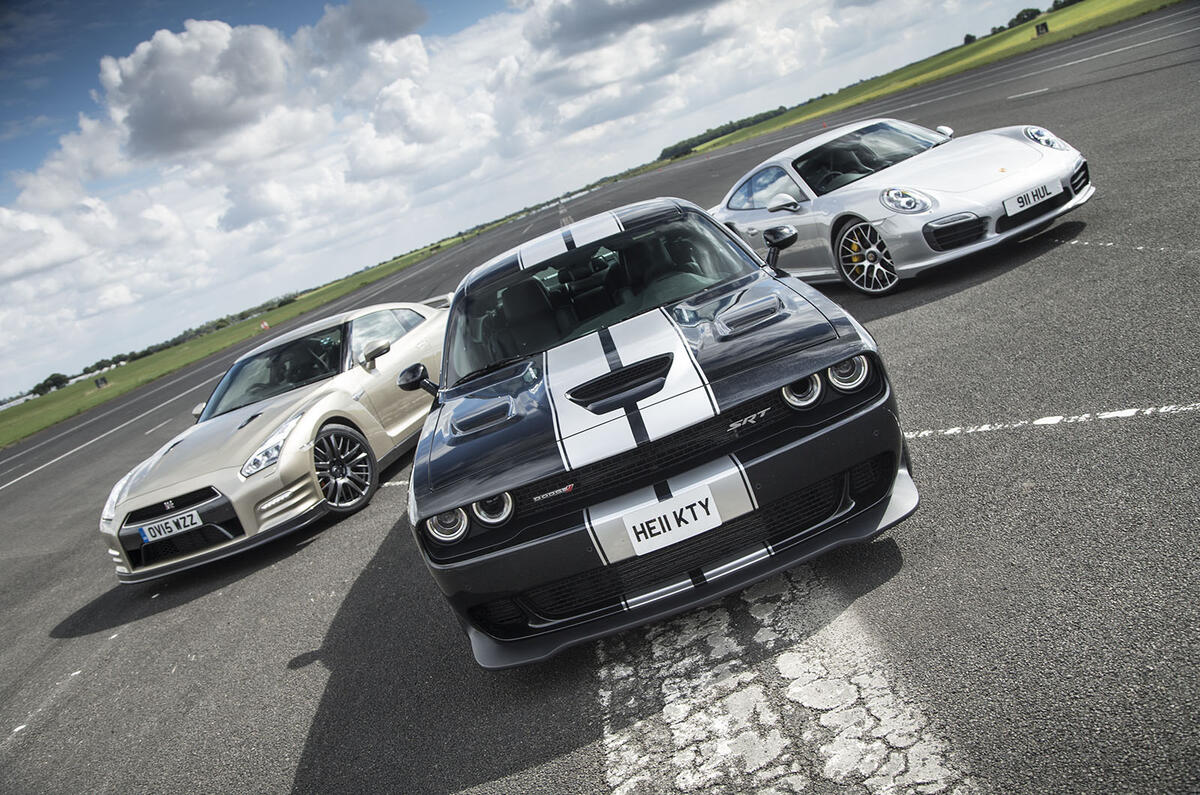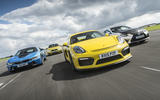Pirates of the Caribbean didn’t start life as a huge film franchise, as you might know.
At first, it was just a Disneyland theme park ride – a few-minute thrill whose name and vague theme, decades after its launch, someone concocted a plot around and threw Johnny Depp into.
Similarly, this story didn’t start out as a magazine feature at all. Instead, it began life as a series of drag races that we videoed. Then someone said: “You know, we should probably tell people a bit more about this.” And thus the audio-visual few-minute thrill has become the feature you see here.
The idea behind it was straightforward enough, though: take some quick road cars, superbikes and other wild cards and put them up against each other in a series of drag races, hopefully matching vehicles of similar accelerative ability. We’d line them up and, a quarter of a mile later, see if we were right.
In many cases, we were able to put our GPS data-logging hardware on the machines, but sometimes we were not. Where we have data, we’ve published it.
Race one - Litchfield Nissan GT-R versus race bike
As car vs bike challenges go, this is a pretty senior one. Litchfield Imports has spent nearly 20 years importing, modifying and tuning mostly Japanese cars, and the Nissan GT-Rs that it modifies can run more than 1200bhp.
The RC Express Racing Kawazaki ZX-10R of Ivan Lintin, meanwhile, is a sub-200kg road-racing superbike that makes a bit over 200bhp.
Lintin is in charge of his own getaway. There’s no traction control, so he must feed out the clutch and keep the front wheel on the deck as best he can, but he can give it full throttle from second gear.
Litchfield’s gaffer, Iain Litchfield, has to worry less about wheelies and more about the drivetrain. On his first go, the ECU, it turns out, is set up to give more turbo boost the longer you hold launch control and, after a too-long pause for the lights to change, it lunches a driveshaft. Litchfield thought it might, so he has brought a spare.
Half an hour later he has swapped it and is ready to go again.
With the GT-R’s torque limited to save the transmission, the bike gets away narrowly ahead, but when the car shifts into fourth gear, torque becomes unlimited and it spins up all four wheels. Which is quite a sight, although not one Lintin sees, because he’s still ahead. At the quarter mile, the bike nips it, but the GT-R - 10.3sec at around 170mph for the standing quarter - is gaining.





















Join the debate
Add your comment
Symanski wrote:
I've heard of a few issues with BMW engines, but they're generally quite reliable. Have you ever had an issue?..
And the winner is
A 8ish year old R1 that costs around the same as a set of tyres on the Porsche. Nice riding by the way
The only problem...
was the BMW needing an engine rebuild after every run!
;-)